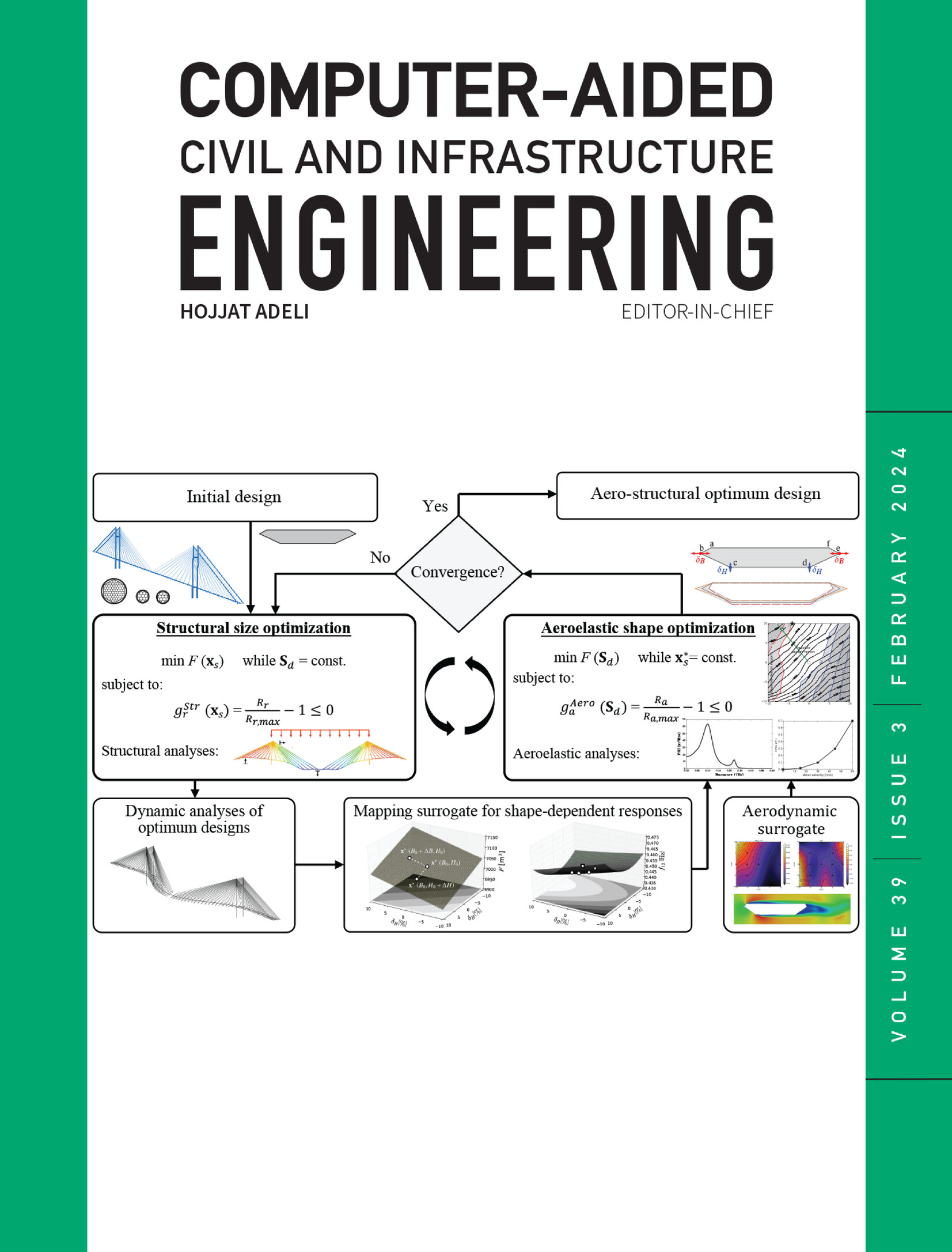施工设备任务监控的零射击框架
IF 8.5
1区 工程技术
Q1 COMPUTER SCIENCE, INTERDISCIPLINARY APPLICATIONS
引用次数: 0
摘要
由于在不同环境中收集和标记大型数据集的高资源需求,基于视觉的施工设备监测在可扩展性方面受到限制。本研究提出了一个框架,采用零射击学习(ZSL)和多模态大语言模型(MLLM)从视频帧中识别施工设备任务,而无需额外的训练数据。该框架分为两个阶段:(i)零射击施工设备检测阶段,包括检测和跟踪模块;(ii)基于mllm的监测阶段,利用专有模型(即gpt - 40 mini)识别任务。实验表明,该框架对ZSL设备检测的f1得分为82.2%。构建了一个选择题(Multiple Choice Question, MCQ)数据集来评估MLLM,准确率达到79.0%。以挖掘机任务为重点的实际案例研究表明,该系统可以准确识别空闲状态和复杂操作。这些结果突出了所提出的框架在自动化施工设备监测方面的潜力。本文章由计算机程序翻译,如有差异,请以英文原文为准。
Zero-shot framework for construction equipment task monitoring
Vision-based monitoring of construction equipment is limited in scalability due to the high resource demands of collecting and labeling large datasets across diverse environments. This study proposes a framework that employs Zero-Shot Learning (ZSL) and Multimodal Large Language Model (MLLM) to recognize construction equipment tasks from video frames without additional training data. The framework operates in two stages: (i) a zero-shot construction equipment detection stage that includes detection and tracking modules and (ii) an MLLM-based monitoring stage, utilizing the proprietary model (i.e., GPT-4o mini) to recognize tasks. Experiments showed that the framework achieved an F1-score of 82.2% for equipment detection using ZSL. A Multiple Choice Question (MCQ) dataset was constructed for evaluating MLLM, which achieved an accuracy of 79.0%. A practical case study, focusing on excavator tasks, demonstrated accurate recognition of both idle states and complex operations. These results highlight the proposed framework's potential to automate construction equipment monitoring.
求助全文
通过发布文献求助,成功后即可免费获取论文全文。
去求助
来源期刊
CiteScore
17.60
自引率
19.80%
发文量
146
审稿时长
1 months
期刊介绍:
Computer-Aided Civil and Infrastructure Engineering stands as a scholarly, peer-reviewed archival journal, serving as a vital link between advancements in computer technology and civil and infrastructure engineering. The journal serves as a distinctive platform for the publication of original articles, spotlighting novel computational techniques and inventive applications of computers. Specifically, it concentrates on recent progress in computer and information technologies, fostering the development and application of emerging computing paradigms.
Encompassing a broad scope, the journal addresses bridge, construction, environmental, highway, geotechnical, structural, transportation, and water resources engineering. It extends its reach to the management of infrastructure systems, covering domains such as highways, bridges, pavements, airports, and utilities. The journal delves into areas like artificial intelligence, cognitive modeling, concurrent engineering, database management, distributed computing, evolutionary computing, fuzzy logic, genetic algorithms, geometric modeling, internet-based technologies, knowledge discovery and engineering, machine learning, mobile computing, multimedia technologies, networking, neural network computing, optimization and search, parallel processing, robotics, smart structures, software engineering, virtual reality, and visualization techniques.

 求助内容:
求助内容: 应助结果提醒方式:
应助结果提醒方式:


